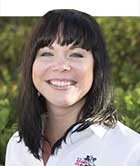by Ali Enerson, Hoard's Dairyman Special Publications Editor
Fresh, available drinking water is essential for healthy, high-producing dairy cows. A 1,500-pound lactating dairy cow consumes approximately 25 to 35 gallons of water per day. Drinking water meets 80 to 90 percent her total water needs. Of that percentage, 30 to 50 percent is consumed within an hour after milking.
Knowing that, ensuring that enough clean water is readily available in all weather conditions is critical. As we're in the midst of cold weather season, be sure to check your waterers regularly to make sure they are in working order. Upgrade a heating element, check for corroded valves or clogged pipes to be proactive and avoid unnecessary headaches.
If you're unsure if your cows are subject to low water intake, look for some of these signs from the article Water: The Often Forgotten Nutrient:
Cooperative Extension Service of New Mexico State University's article Water for Dairy Cattle provides some additional information.
 The author , Ali Enerson, was the special publications editor, responsible for books, plans, distribution of the e-newsletter and various internal communication pieces. She grew up on a 60-cow dairy in northwest Wisconsin, and is a graduate of University of Wisconsin–Madison with a degree in life sciences communications.
The author , Ali Enerson, was the special publications editor, responsible for books, plans, distribution of the e-newsletter and various internal communication pieces. She grew up on a 60-cow dairy in northwest Wisconsin, and is a graduate of University of Wisconsin–Madison with a degree in life sciences communications.
Fresh, available drinking water is essential for healthy, high-producing dairy cows. A 1,500-pound lactating dairy cow consumes approximately 25 to 35 gallons of water per day. Drinking water meets 80 to 90 percent her total water needs. Of that percentage, 30 to 50 percent is consumed within an hour after milking.
Knowing that, ensuring that enough clean water is readily available in all weather conditions is critical. As we're in the midst of cold weather season, be sure to check your waterers regularly to make sure they are in working order. Upgrade a heating element, check for corroded valves or clogged pipes to be proactive and avoid unnecessary headaches.
If you're unsure if your cows are subject to low water intake, look for some of these signs from the article Water: The Often Forgotten Nutrient:
- Firm, constipated manure
- Low urine output
- High packed-cell volume or hematocrit in blood
- Considerable drops in milk production
- Drinking of urine or pooled water
Cooperative Extension Service of New Mexico State University's article Water for Dairy Cattle provides some additional information.
 The author , Ali Enerson, was the special publications editor, responsible for books, plans, distribution of the e-newsletter and various internal communication pieces. She grew up on a 60-cow dairy in northwest Wisconsin, and is a graduate of University of Wisconsin–Madison with a degree in life sciences communications.
The author , Ali Enerson, was the special publications editor, responsible for books, plans, distribution of the e-newsletter and various internal communication pieces. She grew up on a 60-cow dairy in northwest Wisconsin, and is a graduate of University of Wisconsin–Madison with a degree in life sciences communications.








